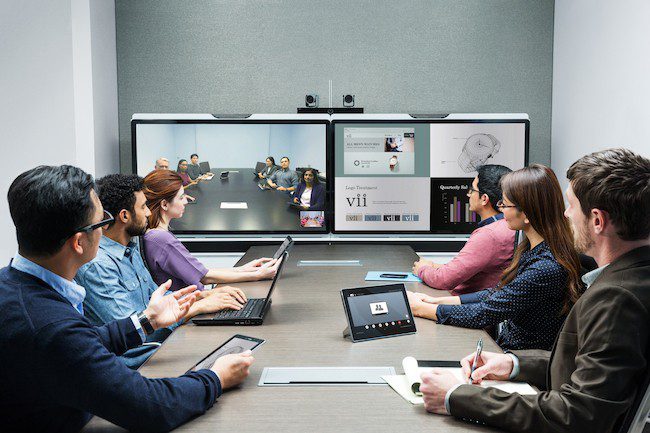AUDIO VISUAL FOR MANUFACTURING
Projection Screens & Mounts
Commercial Projectors
Wireless Microphone Systems
Interfaces & Control Systems
Room Management Systems
Audio Conferencing
Audio-visual equipment is crucial in manufacturing, helping businesses improve communication, training, and productivity. From conference rooms and training facilities to production floors and assembly lines, audio-visual equipment is used in various areas of the manufacturing industry to enhance operations and streamline processes.
One of the essential audio-visual equipment in the manufacturing sector is video conferencing systems. Video conferencing allows remote collaboration, enabling teams to connect and communicate in real-time regardless of physical location. With video conferencing systems, manufacturing companies can hold virtual meetings, share screens, and discuss project updates conveniently. These systems often include high-definition cameras, microphones, and displays that deliver clear audio and crisp visuals, creating an immersive communication experience. In addition, some video conferencing systems offer features like screen sharing, document collaboration, and recording capabilities, making them ideal for remote training sessions, client meetings, and supplier collaborations.
Another vital audio-visual equipment for the manufacturing sector is digital signage. Digital signage solutions enable manufacturing companies to display real-time information, announcements, and safety messages on screens placed strategically across their facilities. From displaying key performance indicators (KPIs) and production metrics to safety reminders and emergency alerts, digital signage keeps employees informed, engaged, and aware of their surroundings. Digital signage can also showcase company achievements, welcome visitors, and promote a positive work environment. By leveraging digital signage, manufacturing companies can effectively communicate important information and improve internal communication channels.

Audio systems are also crucial in manufacturing, particularly in areas with high noise levels, including production floors and assembly lines. Audio systems, such as public address (PA) and distributed paging systems, allow clear and effective communication between supervisors, managers, and workers. PA systems are typically used for broadcasting announcements, safety instructions, and emergency alerts throughout the facility, ensuring that critical information reaches all employees. Distributed paging systems, on the other hand, distribute audio signals evenly across designated areas, ensuring that all workers can hear important messages without disruptive noise interference. Using audio systems, manufacturing companies can enhance workplace communication, improve efficiency, and maintain a safe working environment.
Training and education are essential aspects of the manufacturing sector, and audio-visual equipment significantly facilitates these processes. Interactive whiteboards and touchscreens are used in training rooms and classrooms to deliver engaging presentations, demonstrations, and interactive learning experiences. These tools allow trainers and educators to annotate content, highlight key points, and encourage participation. Video wall systems are also used in training rooms to display large-scale visuals, such as product demos and instructional videos, making learning more immersive and impactful. By utilizing audio-visual equipment for training and education, manufacturing companies can enhance the skills and knowledge of their workforce, leading to improved productivity and performance.
In conclusion, audio-visual equipment plays a critical role in the manufacturing sector, assisting businesses in improving communication, training, and productivity. Video conferencing systems enable remote collaboration and communication, while digital signage solutions enhance internal communication and information dissemination. Audio systems facilitate clear communication on noisy production floors, and interactive whiteboards and touchscreens improve training and education processes. By leveraging audio-visual equipment, manufacturing companies can optimize their operations, increase efficiency, and create a safer and more engaging work environment.
